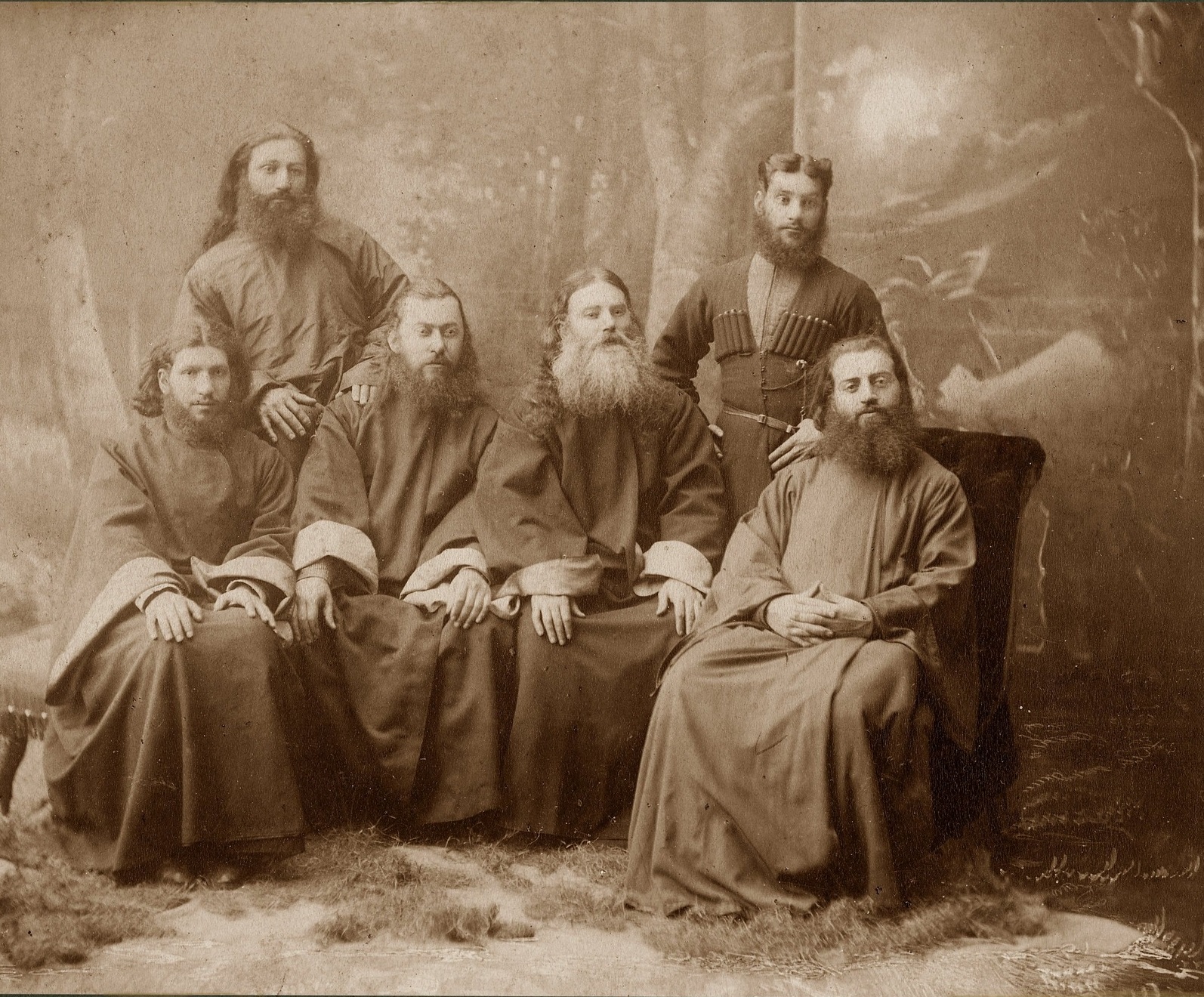Guardians of Georgian Chant
This photograph is preserved in Album No. 394 at the Central Archive of Film and Audio-Visual Documents, part of the National Archives of Georgia. It depicts the four Karbelashvili brothers together with Fathers Grigol Mghebrishvili and Aleksandre Molodinashvili. The photo bears an inscription by Polievktos Karbelashvili dated March 1885, as well as the photographer Philipovits’s stamp.
In this article, we explore the background of the photograph and the contributions of those that it portrays to Georgian culture.
The conquest of Georgia by the Russian Empire and the abolition of the autocephaly of the Georgian Apostolic Church had devastating consequences for the Georgian people. One of the most vulnerable treasures of Georgian culture—its ancient tradition of church chant—came under serious threat. Historic dioceses and monasteries were shut down, and centuries-old centres of education and chanting were dismantled. This was particularly evident in the second half of the 19th century, when elderly clergymen who had preserved the chants passed away, and with them, many chants were lost forever to future generations. By the 1860s, only a handful of people remained who still knew the old style of chant. In East Georgia, the Karbelashvili family stood out for their deep knowledge of the tradition, and they took great care to preserve this centuries-old heritage.
The priest Grigol Karbelashvili had learnt the liturgical tradition from childhood, under the guidance of his father, Petre, himself a skilled chanter.
Leaders of the national movement, led by Ilia Chavchavadze, began to speak publicly about the importance of preserving Georgian chant. The school of chant revived by Archpriest Grigol at Bodbe Monastery drew considerable attention, and he was invited to teach at both the Tbilisi Theological Seminary and the Theological College.
From 1864 onwards, Father Grigol taught Georgian chant to the students of the seminary. Unfortunately, due to the chauvinistic policies of the Russian seminary administration, he encountered many obstacles and was ultimately dismissed from his post in 1877.
Archpriest Grigol Karbelashvili had five sons, all of whom entered the priesthood. They possessed musical talent and, most importantly, a deep commitment to preserving the legacy of their ancestors. Sadly, Archpriest Grigol passed away in 1880, after which Andria, Polievktos, Vasil, and Petre undertook the noble task of continuing his work.
In 1884, the prominent national figure and patron of the arts, Archpriest Aleksandre Okropiridze, resolved to have Georgian church chants transcribed and published at his own expense. He insisted that the Karbelashvili brothers take an active role in this challenging undertaking. The absence of their late father, Archpriest Grigol, was deeply felt. The brothers turned for support to two of his most talented pupils — Fathers Grigol Mghebrishvili and Aleksandre Molodinashvili. It was agreed that the transcription of the chants would be carried out by Mikhail Ippolitov-Ivanov,[1] director of the Tbilisi Music School. The group began its work in October 1884. Thanks to their efforts, many chants were rescued from oblivion. During this process, Father Vasil Karbelashvili came to the realisation that he would need to learn musical notation in order to transcribe chants independently — something he later achieved.
This photograph preserves the faces of several people whose contribution to the preservation of Georgian chant is immeasurable.
[1] Mikhail Ippolitov-Ivanov (1859, Gatchina – 1935, Moscow) was a Russian composer, conductor, and pedagogue. He was also a collector of Georgian chants and folk songs. He served as the rector of the Tbilisi Conservatory from 1924 to 1925.




